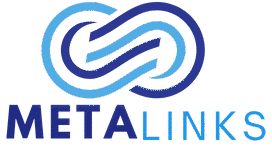Introduction
Software has become the backbone of modern economies, powering industries from healthcare and finance to logistics and entertainment. What was once a niche domain for specialists has now expanded into an essential driver of global innovation. As organizations rely more heavily on digital solutions, understanding the latest developments in software creation, deployment, and management is critical. This article explores the state of the industry, identifies current trends, and examines what the future may hold.
From Traditional Programming to Agile Methodologies
Historically, software was built using rigid, linear models such as the waterfall approach. Projects often ran over budget, exceeded deadlines, and failed to meet evolving business requirements. The introduction of agile methodologies revolutionized the field by emphasizing collaboration, iteration, and customer feedback. Today, agile and its variants, such as Scrum and Kanban, dominate development teams worldwide. This flexibility allows organizations to release features faster and respond to market demands in near real time.
Cloud-First Development
One of the most significant shifts in the past decade has been the transition to cloud computing. Instead of relying solely on local servers, companies now use platforms such as Amazon Web Services, Microsoft Azure, and Google Cloud to host applications. This approach offers scalability, cost efficiency, and enhanced security. Cloud-native architecture enables developers to design software that can grow seamlessly as user demand increases. Containerization technologies like Docker and Kubernetes further simplify deployment and resource management.
The Rise of Low-Code and No-Code Platforms
A growing trend in the software world is the democratization of development through low-code and no-code platforms. These tools empower business analysts, marketers, and other non-technical staff to build applications without writing extensive code. Companies such as OutSystems, Mendix, and Bubble provide drag-and-drop interfaces that accelerate digital transformation. While not a complete replacement for professional programming, these platforms reduce bottlenecks and free skilled engineers to focus on complex tasks.
Artificial Intelligence in Software Creation
Artificial intelligence (AI) is transforming how programs are designed, tested, and maintained. Tools that leverage machine learning can generate code snippets, detect bugs, and suggest improvements. For instance, AI-assisted coding platforms enhance developer productivity by automating repetitive tasks. Additionally, AI is reshaping software applications themselves, powering chatbots, recommendation engines, and predictive analytics. The integration of AI not only improves user experiences but also enables organizations to extract valuable insights from large datasets.
Security at the Core
As digital threats evolve, cybersecurity has become a central concern in software design. Developers now adopt a “security by design” mindset, embedding protective measures from the earliest stages of development. Practices such as continuous vulnerability scanning, encryption, and multi-factor authentication are standard. Compliance requirements, including GDPR and HIPAA, further drive companies to safeguard user data. With cyberattacks growing in sophistication, investment in secure coding practices and automated defense tools is expected to rise.
Open Source Contributions
The open source movement has reshaped the industry by enabling collaborative innovation. Platforms like GitHub and GitLab host millions of projects where developers worldwide contribute improvements and share code freely. Popular frameworks such as React, TensorFlow, and Kubernetes originated in open source communities and have since become industry standards. For businesses, open source reduces costs, fosters transparency, and accelerates adoption of emerging technologies. At the same time, companies increasingly contribute back to these communities, creating a virtuous cycle of growth.
Remote Work and Global Collaboration
The shift toward remote and hybrid work models has influenced software teams significantly. Distributed development has become the norm, with tools like GitHub Actions, Jira, and Slack enabling seamless collaboration across time zones. This global talent pool allows organizations to access expertise regardless of geography. However, it also requires careful management of communication, project coordination, and cultural differences. Companies that master remote collaboration gain an edge in productivity and innovation.
Industry Applications of Modern Software
Software today is not confined to IT departments. It permeates virtually every industry:
-
Healthcare: Electronic health records, telemedicine platforms, and AI-driven diagnostic tools improve patient outcomes.
-
Finance: Digital banking, blockchain, and robo-advisors redefine customer interactions and financial management.
-
Manufacturing: Smart factories rely on software to optimize supply chains, monitor equipment, and predict maintenance needs.
-
Education: E-learning platforms and virtual classrooms expand access to knowledge across borders.
These examples highlight how software has moved from being a support function to a strategic asset driving innovation and competitive advantage.
Future Outlook: Where Software is Heading
The coming years will likely see further transformation in the way programs are built and delivered. Some of the most anticipated developments include:
-
Quantum Computing: Although still experimental, quantum algorithms could eventually revolutionize problem-solving in areas such as cryptography and logistics.
-
Edge Computing: With billions of IoT devices generating data, processing closer to the source reduces latency and improves performance.
-
Ethical AI: As artificial intelligence becomes ubiquitous, developers must prioritize fairness, transparency, and accountability in design.
-
Hyperautomation: Combining robotic process automation with AI and machine learning will streamline operations across industries.
-
Greater Personalization: Software will increasingly adapt to individual user preferences, creating tailored experiences in education, healthcare, and entertainment.
Conclusion
Software development has evolved from rigid, isolated processes into a dynamic, collaborative, and innovation-driven discipline. Cloud computing, agile practices, and AI have transformed how solutions are designed and delivered. At the same time, challenges such as cybersecurity threats, ethical concerns, and rising complexity require constant adaptation. Businesses that embrace these changes will not only remain competitive but also help shape the digital future. As technology continues to advance, software will remain at the center of progress, driving growth and improving lives across the globe.










